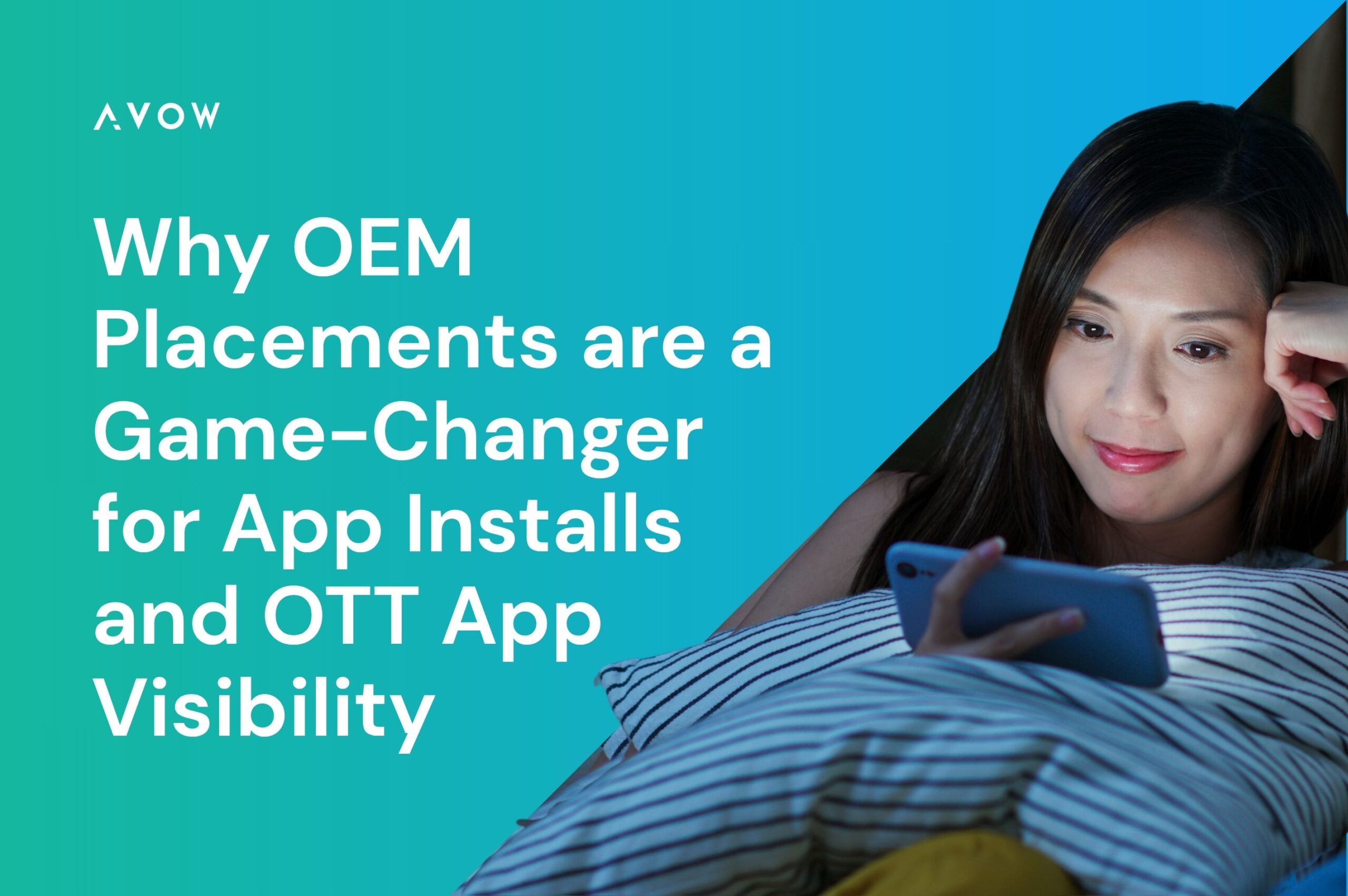The mobile landscape is an increasingly saturated and expensive battleground. For app marketers and developers aiming for app installs, relying solely on traditional channels like the Google Play Store and paid social media has become a recipe for diminishing returns. However, a significant shift in advertising strategy is underway, offering a unique and exciting opportunity that could change the game: Mobile Original Equipment Manufacturer (OEM) placements. This unique opportunity could revolutionize your app installs and OTT app visibility, offering a new and exciting path to success.
The global market share of Android phones reached 79% in the second quarter of 2025, while iOS holds 17%. OEM advertising offers a unique opportunity to secure premium visibility by positioning apps directly on the device—a space where users are most attentive. This strategy is proving to be a game-changer, fundamentally transforming user acquisition and driving high-quality app installs by putting your product directly in front of billions of potential users.
The untapped potential of mobile OEM placements
Mobile OEM advertising leverages partnerships between advertisers and device manufacturers (OEMs) such as vivo, Samsung, Xiaomi, and Huawei. As of Q2 2025, Samsung has a global market share of 19.7%, followed by Xiaomi at 14.4% and Vivo at 9.2%. Running ad campaigns with these mobile OEMs could be beneficial.
These OEM placements enable the distribution and promotion of mobile apps across various touchpoints in the smartphone ecosystem, bypassing the crowded Google Play Store and other app marketplaces.

1. Direct access to high-intent users
The primary power of the OEM channel lies in securing direct access to users at key moments of device use, often before users even start searching for new apps.
- Zero-moment of truth: OEM ads capture the user’s attention at the ‘zero moment of truth’—a marketing concept that refers to the moment when a consumer is most open to a brand’s message, often before they start searching for new apps. It could be during the initial device setup, on the home screen, or within curated recommendations from the device manufacturer. By understanding and leveraging this concept, OEM ads ensure your app is seen by high-intent users actively engaging with their new device, potentially leading to higher app installs.
- Scale and quality: The mobile OEM advertising channel provides unmatched scale, with partners like ours. For example, AVOW covers 86% of the global Android market and reaches over 1.85 billion daily active users worldwide. This access offers both volume and quality, as the placements are typically less cluttered than social feeds.

2. The power of pre-installed apps and curated stores
Mobile OEM platforms offer a variety of high-impact ad formats that move beyond standard display banners, giving you the confidence of diverse options to reach your target audience.
- Dynamic preloads: These aren’t permanent, space-consuming pre-installed apps; instead, they are intelligent recommendations surfaced during device setup. The user actively selects the apps they wish to install, which immediately signals high-intent users.
- Alternative app stores: OEMs run powerful app stores, such as Xiaomi GetApps and Huawei AppGallery, which serve as high-conversion traffic sources. These stores often offer less competition and better visibility than the Google Play Store.
- Widget and folder placements: Strategically placing your app icons or recommendation widgets within curated folders on the home screen (e.g., “Entertainment” or “Essentials”) ensures consistent visibility during daily device usage.
- Brand credibility through native presence: Deploying assets through an OEM channel lends your app significant legitimacy. Seeing your brand directly integrated into the primary device experience, often alongside curated system apps or during the trusted device setup process, fundamentally enhances user trust and long-term credibility.

3. Granular targeting and superior transparency
A significant advantage for app marketers is the richness of user data available through the
OEM campaign.
- Device-level data: Advertisers gain insights into user behavior based on the actual device model, operating system version, and typical device usage patterns. This level of detail enables highly precise targeting, ensuring mobile OEM ads reach the most relevant consumers.
- Privacy-compliant targeting: OEMs can target based on aggregated, device-level data that complies with privacy guidelines, providing a sustainable alternative to reliance on third-party cookies.
- Clear attribution: The attribution chain is typically cleaner and more transparent than complex programmatic routes, making it easier to measure the true return on ad spend for app installs.
Strategic advantages for app developers and marketers
4. Overcoming Google Play Saturation and CPA Inflation
The cost per acquisition (CPA) on saturated platforms like Google Play continues to climb. OEM advertising provides a vital counterbalance by offering a unique opportunity to scale user acquisition without directly competing in the hyper-inflated auction environment of traditional platforms.
- Cost-effective scaling: By accessing new audiences that are not active on search or social feeds, app developers can secure significant app installs at a more efficient rate, thereby optimizing overall ad spend.
5. Enhancing brand credibility and user experience
Placements curated by the original equipment manufacturer lend your app an air of legitimacy. When a user sees a recommendation directly from the company that built their smartphone, it instills a sense of trust.
- Contextual relevance: Unlike disruptive pop-ups, the best OEM placements are contextually relevant and non-intrusive, enhancing the overall user experience and reducing negative sentiment toward the advertising.
6. The future of user retention and engagement
Mobile app retention rates are generally relatively low, with global averages falling to approximately 5.7% by the end of the 30th day following installation. It represents a significant decrease from around 25% on the first day after download, highlighting a common challenge faced by app developers.
Notably, retention and engagement metrics can vary widely across industries. For instance, sectors such as digital banking and media/entertainment tend to demonstrate more robust retention figures, in contrast to the gaming industry, which often reports lower rates.
To better understand user engagement and retention, it’s crucial to monitor several key performance indicators. One important metric is the ratio of Daily Active Users (DAU) to Monthly Active Users (MAU). A DAU/MAU ratio of around 20% is generally considered a favorable sign,
indicating that a substantial portion of monthly users engage with the app daily. Tracking these metrics can provide valuable insights into user behavior and inform strategies to enhance user loyalty and extend the app’s lifecycle.
In this context, it’s important to note that user quality plays a significant role in these metrics. High-quality users acquired through the OEM channel often lead to better long-term retention. Specifically, users who choose to install an app during device setup are typically high-intent users.
Their engagement levels and lifetime value tend to be higher, further strengthening the DAU/MAU ratio and contributing positively to overall user retention. By focusing on acquiring such users, we can not only improve immediate engagement metrics but also cultivate a loyal user base that sustains the app’s success over time.
- Retargeting and notifications: Mobile OEM platforms are also evolving to enable sophisticated re-engagement tactics, such as time-zone-optimized push notifications and native in-device banners, to encourage renewed device usage and feature adoption.
Conclusion
The future of app marketing for mobile apps is intrinsically linked to diversification. Relying solely on the major app store ecosystems is no longer a viable advertising strategy for achieving scalable success.
Mobile OEM advertising represents the most powerful new frontier, offering app developers a strategic way to bypass the clutter and secure premium user attention when it matters most.
This OEM channel offers advertisers a unique opportunity to achieve massive app installs and superior visibility. Mastering these OEM placements is essential for any marketer seeking sustainable, profitable user acquisition in the evolving mobile marketing landscape.
Contact us now to get started with Mobile OEM Advertising.
About the Author






